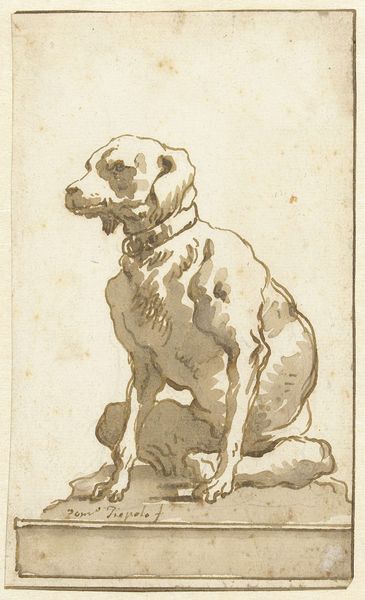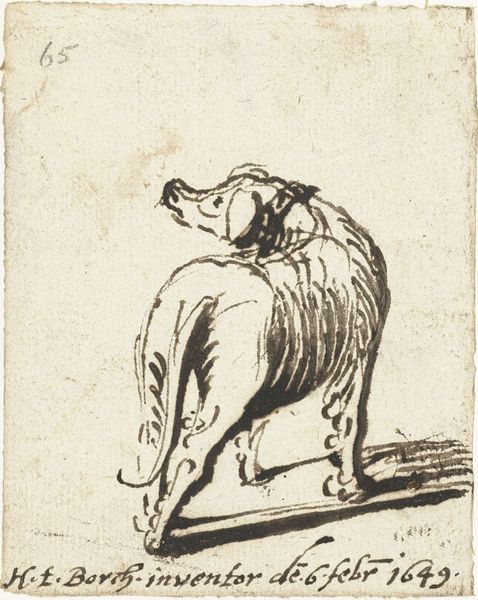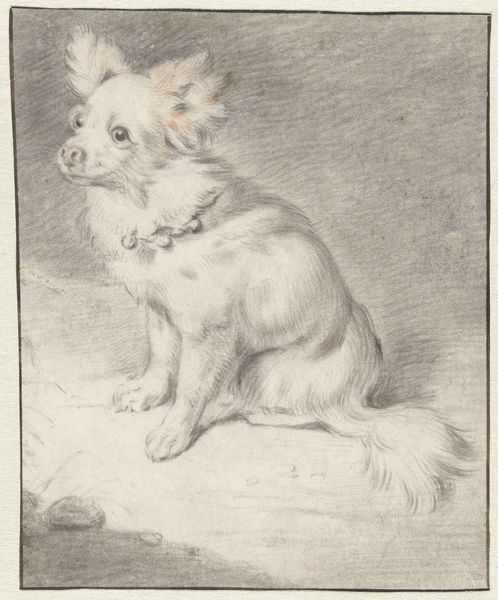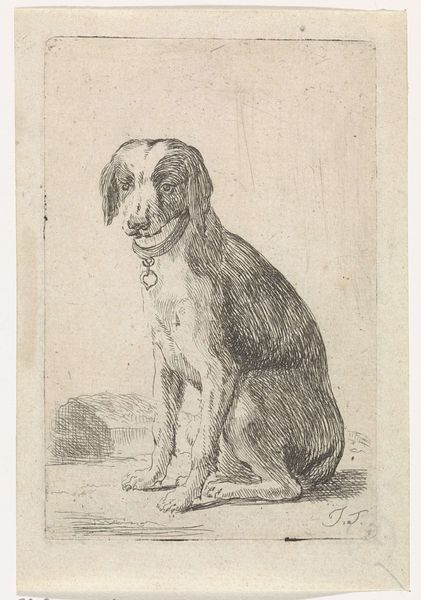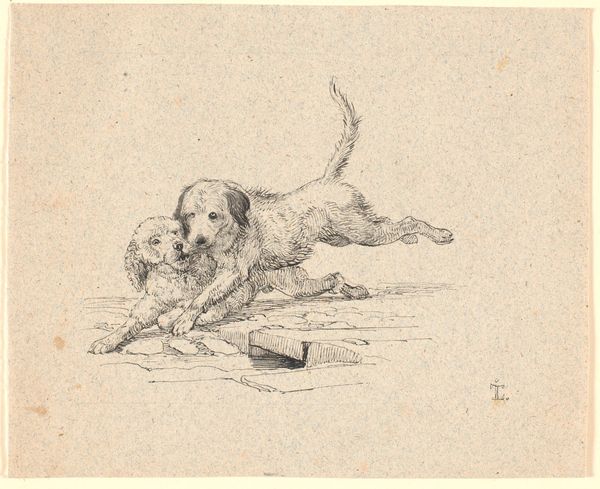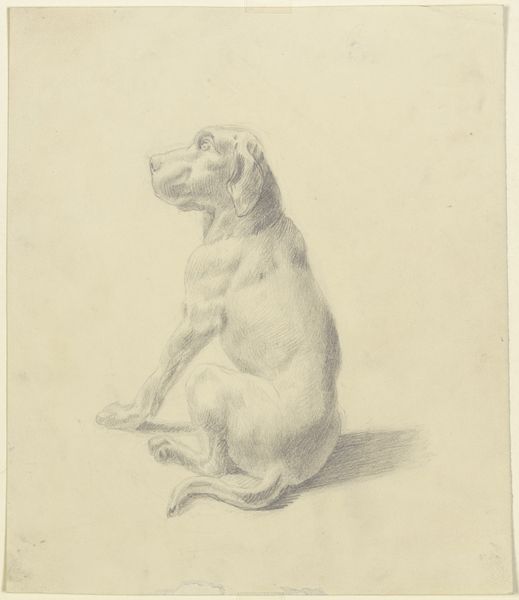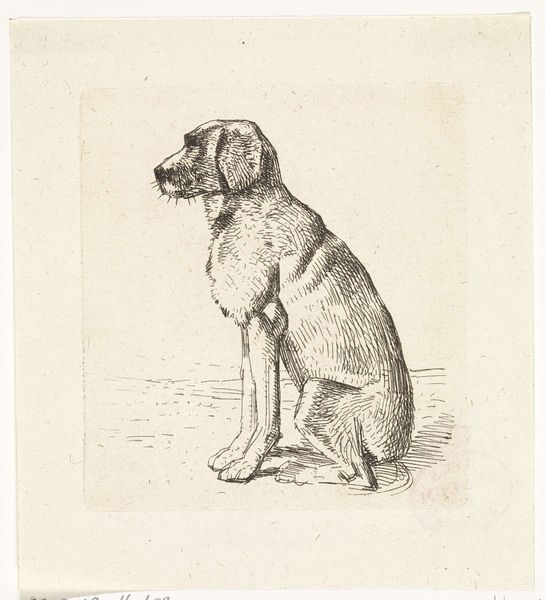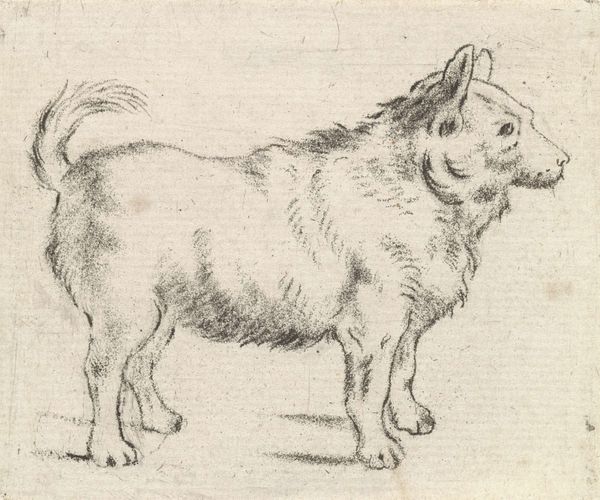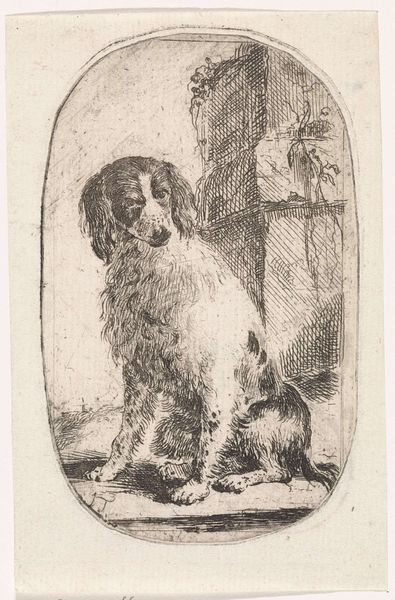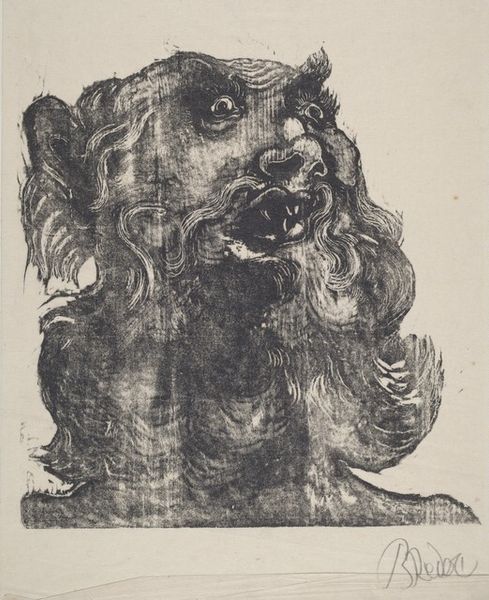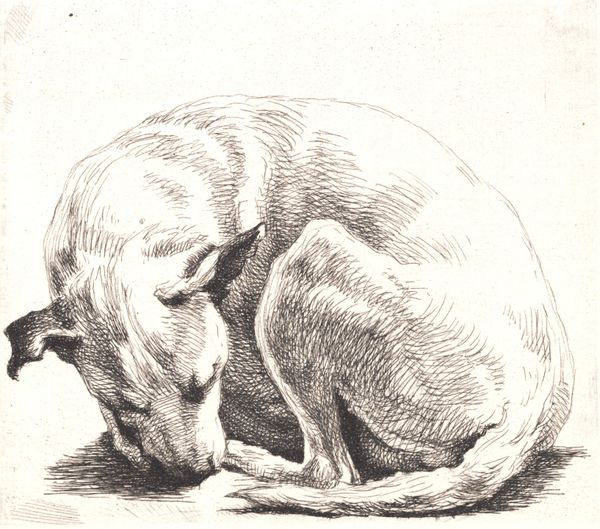
drawing, pencil, charcoal
#
portrait
#
drawing
#
animal
#
pencil sketch
#
pencil
#
genre-painting
#
charcoal
#
realism
Dimensions: height 137 mm, width 104 mm
Copyright: Rijks Museum: Open Domain
Curator: Before us is a work titled "Zittende hond," or "Seated Dog," rendered in pencil and charcoal sometime between 1767 and 1780. Editor: Ah, a portrait of patience. I immediately get the impression that he is in deep thought, possibly longing for a treat! The muted tones evoke a kind of old-world charm. Curator: Absolutely. The artist, Bernhard Schreuder, truly captures the animal's pensive mood through careful realism, observing and rendering. The textures of the fur, created with subtle shifts in pressure, seem tactile despite being a drawing. Think of the dog as an icon of fidelity... Editor: I see the layers in how Schreuder has used cross-hatching to build up shadows, giving weight to the dog’s form. This almost feels like an act of affection. I like your interpretation! Perhaps in this moment the artist seeks to connect with that universal canine loyalty that speaks of unwavering presence. There is definitely an emotional tone. Curator: Exactly! Look closer, it's a seemingly straightforward study. One also sees elements of genre-painting because he appears totally absorbed. And do notice the slightly turned head—an indication, I think, of his watchfulness. The symbol here reveals not just animal, but the psychological aspect of domesticated relationship. It's subtle. Editor: It’s precisely this quiet observation that draws me in. It's a far cry from the bombastic allegories and portraits. "Zittende hond" shows affection simply and candidly—without the artist needing to depict grandiose meaning. Curator: True enough! What began as perhaps a mere observation blossoms, ultimately revealing depth upon layers and repeated observations. Editor: Yes. Art is truly about seeing beyond the subject: more than just rendering technique it opens new vistas into human relationships, inner realities, and quiet observation.
Comments
No comments
Be the first to comment and join the conversation on the ultimate creative platform.
